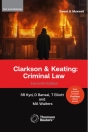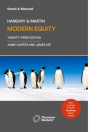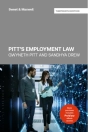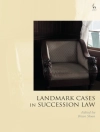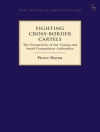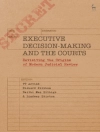A comprehensive guide to effective participation in the public debate about our most indispensable right: freedom of expression
Encouraging readers to think critically about freedom of speech and expression and the diverse critical perspectives that challenge the existing state of the law, this text provides a comprehensive analysis of the historical and legal contexts of the First Amendment, from its early foundations all the way to censorship on the Internet. Throughout the book, authors Douglas M. Fraleigh and Joseph S. Tuman use the ‘Marketplace of Ideas’ metaphor to help readers visualize a world where the exchange of ideas is relatively unrestrained and self-monitored.The text provides students with the opportunity to read significant excerpts of landmark decisions and to think critically about the issues and controversies raised in these cases. Students will appreciate the treatment of contemporary issues, including free speech in a post-9/11 world, free expression in cyberspace, and First Amendment rights on college campuses.
Features:
- Demystifies free speech law, encouraging readers to grapple with the complexities of significant ethical and legal issues
- Sparks student interest in ‘big picture’ issues while simultaneously covering important foundational material, including incitement, fighting words, true threats, obscenity, indecency, child pornography, hate speech, time place and manner restrictions, symbolic expression, restrictions on the Internet, and terrorism.
- Includes significant excerpts from landmark freedom of expression cases, including concurring or dissenting opinions where applicable, to help students become active learners of free expression rights
- Offers critical analysis and alternative perspectives on free expression doctrines to demonstrate that existing doctrine is not necessarily ideal or immutable
- Includes a global perspective on free expression including a chapter on international and comparative perspectives that helps students see how the values of different cultures influence judicial decisions
Зміст
Preface
List of Court Cases
1. Introduction to Freedom of Expression and the American Legal System
The Nature of Freedom of Speech
How Free Expression Rights Are Determined
Justifications and Critiques of Freedom of Expression
Conclusion
2. Historical Perspectives on Freedom of Expression
Free Expression in World Cultures
Freedom of Expression in America: 1600-1917
Conclusion
3. Incitement to Illegal Conduct and True Threats
The Clear and Present Danger Test
The Gitlow Decision Protects Freedom of Speech From State Abridgement
Freedom of Speech for Communists: Clear and Present Danger?
Brandenburg v. Ohio: Strengthening Protection of Speech
The Brandenburg Rule and Contemporary Communication
Distinguishing Incitement From True Threats
Conclusion
4. National Security and Freedom of Expression
A National Security Exception to the Constitution?
Government Efforts to Limit Free Expression in Wartime
Government Practices That Keep Information Secret
Government Surveillance of Its Citizens
Conclusion
5. Fighting Words and the Categorical Exceptions Doctrines
The Categorical Exceptions and Fighting Words Doctrines Are Announced in Chaplinsky
The Fighting Words Definition is Refined in Terminiello
The Definition of Fighting Words is Narrowed
R.A.V. v. City of St.Paul: Fighting Words and Categorical Exceptions Doctrines Live On
Conclusion
6. Hate Speech
The Problem of Hate Speech
Do Speech Codes Violate the First Amendment?
Thinking Critically About Hate Speech Regulation
Conclusion
7. Defamation: First Amendment Issues
New York Times v. Sullivan: The Actual Malice Rule
The New York Times Rule: Application of the Actual Malice Test
The New York Times Rule: Proof of Actual Malice
Beyond New York Times v. Sullivan: Additional First Amendment Protections
Has the Actual Malice Rule Served Its Purpose?
Conclusion
8. Obscenity and Child Pornography
Obscenity Not Protected by the First Amendment
1957-1973: The Supreme Court Struggles With Meaning of Obscenity
Court Majority Agrees on Obscenity
Does Context Influence Constitutional Protection?
Critical Thinking About Obscenity
Distinguishing Obscenity From Child Pornography
Conclusion
9. Time, Place, and Manner Restrictions
Historical Developments
The Modern Time, Place, and Manner Test
The Forums Held in Trust for Public Expression
Time, Place, or Manner Rules: Noteworthy Controversies
Conclusion
10. Symbolic Expression
The Benefits of Symbolic Expression
The Definitions of Symbolic Expression
The Test for Constitutional Protection of Symbolic Expression
Restrictions Related to Suppression: The Flag Burning Issue
Conclusion
11. Technology and the First Amendment
Medium-Specific Restrictions on Expression: Early History
Theories Used to Justify Broadcast Regulation
Regulation of Internet Communication
Conclusion
12. Privacy and Free Speech
Privacy and the Search for Penumbral Rights
The Right to Privacy in One′s Self
The Right to Privacy Within the Home
Balancing a Right to Persuade With a Right to Privacy in Public Spaces Outside the Home
The Right to Informational Privacy
Conclusion
13. Access to Information
A Right of Access to Government Information
Journalists′ Privilege
Access to Judicial Proceedings
Conclusion
14. Copyright and the First Amendment
Copyright Law in the United States
Copyright Law and the First Amendment
Copyright and New Technology
Conclusion
15. International and Comparative Perspectives on Freedom of Expression
The Global Freedom of Expression Landscape
Cultural Values and Free Expression Rights
Judicial Decisions on Freedom of Expression
Twenty-First Century Technology and International Freedom of Expression
Conclusion
Index
About the Authors
Про автора
Joseph S. Tuman (J.D., University of California, Berkeley; B.A., political science, University of California, Berkeley) is Professor of Political and Legal Communications at San Francisco State University, where he regularly teaches upper-division courses in rhetoric and terrorism, political and legal communication, argumentation & advocacy, and technology and human communication. A past recipient of the Jacobus ten Broek Society Award for Teaching Excellence, Professor Tuman has also taught at the University of California, St. Mary’s College, the New School for Social esearch, and Paris II, the top law school in France. He is the author of Political Communication in American Campaigns(SAGE, ©2008) and the co-author of numerous books, including Freedom of Speech in the Marketplace of Ideas and of The Bedford/St. Martin′s Guide to Public Speaking; he has also been the journal editor of Contemporary Argumentation & Debate: The Journal of the Cross Examination Debate Association. His work has been featured in news publications such as the New York Times, Los Angeles Times and the San Francisco Chronicle, and he has served as a network analyst for news programs on ABC, NBC, CNN and CNN International, FOX and the BBC. He currently appears as a regular political commentator for CBS in the western United States.


